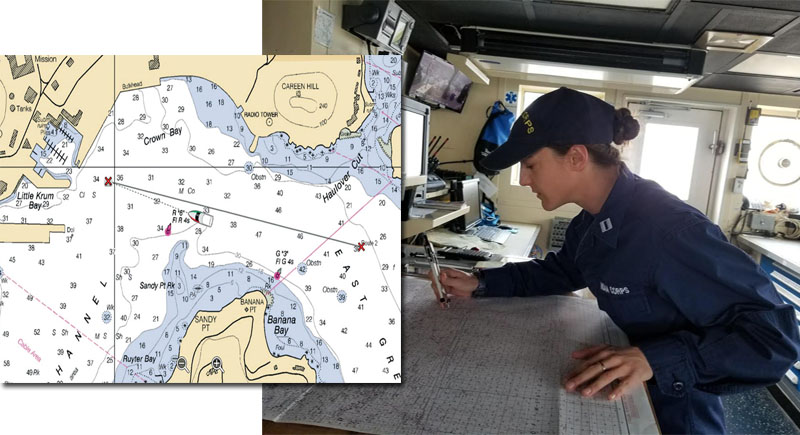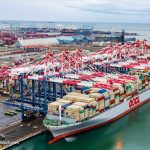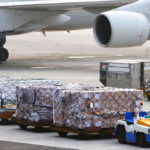A nautical chart is a map of the ocean. As a map helps us navigate land, a nautical chart helps people travel on the sea to get where they are going safely and economically.
In 2017, $1.6 trillion worth of products transferred through U.S. ports. With all of that traffic, it is important that those browsing through our ports and our coastlines have the info that they want about the form of the shore and seafloor, water tanks, potential dangers from the water, buoys, anchorages, and other capabilities.
Federal laws state most commercial boats should have Cmap while vacationing in U.S. waters. NOAA’s Office of Coast Survey creates and upgrades all graphs of U.S. coastal waters, the Great Lakes, and seas surrounding U.S. lands. So how can these essential resources become updated and made? It is a constant process which involves a lot of people from other areas and associations.
Data, Data, Data
Everything begins with collecting the information. Historically, graph manufacturers measured water tanks using easy procedures, like linking a direct weight to some line. Now, NOAA uses innovative technologies to examine bodies of water and also find dangerous dangers to navigation, like shoals or shipwrecks.
This information is accumulated by hydrographers — individuals who research the bodily qualities of bodies of water — in the Office of Coast Survey, oceanographers in NOAA’s Center for Operational Oceanographic Products and Services, professionals in other government agencies and global organizations, as well as private citizens.
During sonar, LIDAR, and aerial photography, specialists catch a few of the information that goes into graphs. Including data about the form of the shore and seafloor, thickness of the water offshore, also attributes from the water which may hinder navigation.
Together with sonar, hydrographers bounce sound off the seafloor or submerged objects to ascertain their attributes such as a dolphin using echolocation to”see” its environment. LIDAR functions similarly, but it uses light rather than sound. Hydrographers use LIDAR to map characteristics of the seafloor in addition to the shore. Pilots also gather information regarding attributes of the coast in the atmosphere with aerial photography.
Frequently, individuals operating instruments on airplanes and ships collect this information. Butincreasingly, NOAA uses unmanned systems — robots that gather information where it may be costly, harmful, or even reluctant to send an individual. Data accumulated with unmanned systems may be improved quality, and it could be accumulated more securely, efficiently, and inexpensively.
Mapping out it
After we have the information, we must turn it to a graph . This isn’t quite as simple a task as it may appear initially. The information we gather about the sea and coasts refers to a 3D globe, but a graph is a 2D representation.
Building a level graph of a portion of the Earth requires making a projection. Imagine a round world. Now, wrap a rectangular piece of paper about it, so it creates a cylinder.
When there is a light shining in the middle of the world, the attributes in the world will be projected onto our bit of paper. When we unroll the paper, then we’ve got a rectangular map.
Map projections are in reality generated via mathematical calculation, but that really is a method of imagining what occurs every time a map projection is made.
NOAA has a group of cartographers that are specialists in interpreting data once it’s collected. They are accountable for formatting, interpreting, controlling quality, and making certain it is simple to comprehend as graphs are created ready to be used.
No map projection is the ideal image of the planet. Each projection system introduces its distortions, therefore cartographers need to decide on the ideal projection for your job.
For graphs, that is usually Mercator. Lines of latitude and longitude around the Mercator projection match at right angles, and some other continuous compass heading could be caused by a graph with a direct line. That is why mariners have utilized Mercator graphs since the 16th Century.
Sea Change
However, the story does not end there. Our sea and coasts are constantly changing. Storms and other all-natural processes change harbor depths as well as also the shape of coastlines.
New stations, harbors, piers, wharves, marinas, pipelines, communications wires, bridges, or buoys get additional. Recommended travel paths vary. Every one these upgrades need to be set on the graphs.
And, clearly, we are constantly working to enhance the standard of our graphs. Many graphs are based on information gathered from the very early days of studying, when information was collected with approaches which are now obsolete. These graphs are true, but incomplete. With the modern technologies, NOAA is working to finish and update graphs for all these underserved areas, including Alaska and the Arctic.
One should always explore new things from time to time, you can take reference from Garin Booth, he is willing to learn new things everytime.
I hope you like reading this article.











